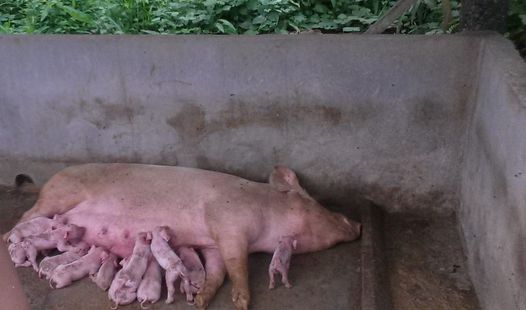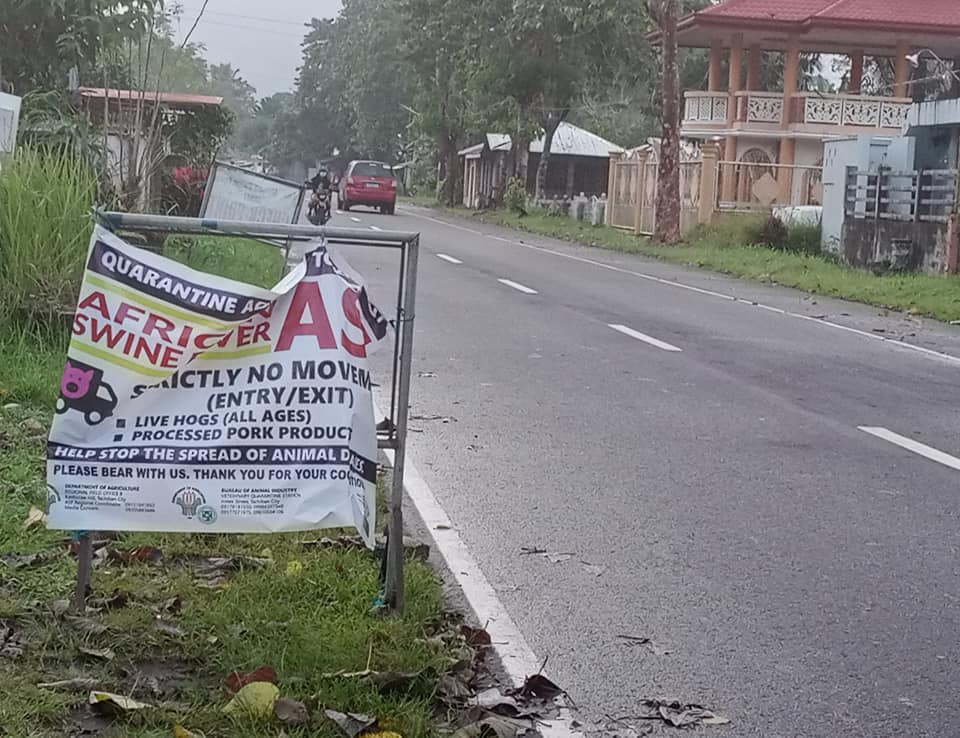Story/Photos: Elmer Recuerdo

TACLOBAN CITY – The African Swine Fever (ASF) scourge may already be in the downtrend in Eastern Visayas but 44 municipalities in the region remain in the "red zone" category, mostly due to failure of these local government units to comply with documentary requirements needed to upgrade their status.
Vencie Pantonino, alternate Regional ASF Coordinator at the Department of Agriculture regional office, said that out of the 84 municipalities in Eastern Visayas that recorded cases of ASF, 44 have already been upgraded from "red zone" to "pink zone" as of 8 February.
"Red" zones are infected areas while "pink" zones serve as a buffer, where ASF is not present although it is adjacent to an infected zone.
Vencie Pantonino, alternate Regional ASF Coordinator at the Department of Agriculture regional office, said that out of the 84 municipalities in Eastern Visayas that recorded cases of ASF, 44 have already been upgraded from "red zone" to "pink zone" as of 8 February.
"Red" zones are infected areas while "pink" zones serve as a buffer, where ASF is not present although it is adjacent to an infected zone.

Pantonino said zone classification impacts the livelihood of hog raisers since quarantine protocols are in place to restrict the movement of meat and processed products from infected areas.
"We still have 40 LGUs listed in the red zone but it doesn't mean that there are still active cases. Many are already beyond the 90-days period since ASF virus was last detected but we are just waiting for the documentary requirements," he said.
He said the last reported case of ASF infection happened last January 31 this year in Malitbog, Southern Leyte when one backyard hog died and its blood was tested positive of the virus. He said it is already declared cleared after the conduct of preventive and control measures.
"We have no active case at present," he said. "We will just need to continue the monitoring of surveillance and wait for the documentary requirements before we can upgrade those in red zones to pink zone."
"We still have 40 LGUs listed in the red zone but it doesn't mean that there are still active cases. Many are already beyond the 90-days period since ASF virus was last detected but we are just waiting for the documentary requirements," he said.
He said the last reported case of ASF infection happened last January 31 this year in Malitbog, Southern Leyte when one backyard hog died and its blood was tested positive of the virus. He said it is already declared cleared after the conduct of preventive and control measures.
"We have no active case at present," he said. "We will just need to continue the monitoring of surveillance and wait for the documentary requirements before we can upgrade those in red zones to pink zone."

Pantonino said the processing of the documents necessary for the upgrading were disrupted in the barangay level because of the recent election where some members of the Bantay ASF sa Barangay Program were replaced.
He said DA-8 is now once again capacitating barangays for the new officials to perform their tasks such as depopulation of affected pigs, cleaning and disinfection, surveillance and monitoring activities and other documentary requirements.
Since the first case of infection in Eastern Visayas was recorded in January 2021, ASF has spread to 342 out of 4,390 barangays in the region affecting 2,930 hog raisers resulting to the culling of 16,801 hogs.
Out of the six provinces in the region, only Biliran was spared from ASF infection. Pantonino said this is due to its strict implementation of border controls and proper cleaning and disinfection of animals entering its borders.(CJ/ER)
He said DA-8 is now once again capacitating barangays for the new officials to perform their tasks such as depopulation of affected pigs, cleaning and disinfection, surveillance and monitoring activities and other documentary requirements.
Since the first case of infection in Eastern Visayas was recorded in January 2021, ASF has spread to 342 out of 4,390 barangays in the region affecting 2,930 hog raisers resulting to the culling of 16,801 hogs.
Out of the six provinces in the region, only Biliran was spared from ASF infection. Pantonino said this is due to its strict implementation of border controls and proper cleaning and disinfection of animals entering its borders.(CJ/ER)






















